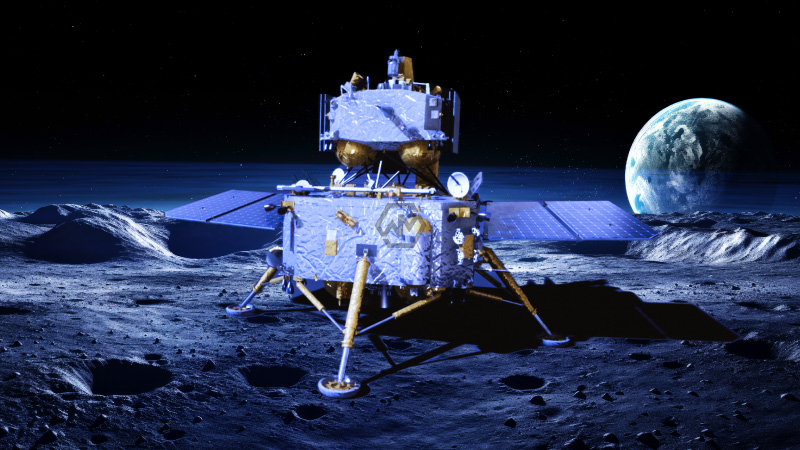- Historic lift-off: Chang’e-6 spacecraft departs from the far side of the moon, carrying precious rock and soil samples.
- Geologic treasure hunt: Mission targets South Pole-Aitken Basin, aiming to unlock ancient lunar mysteries dating back over 4 billion years.
- China‘s lunar ambitions soar: As part of its Chang’e program, China asserts itself as a formidable player in global space exploration, eyeing manned moon missions by 2030.
China’s Chang’e-6 mission has achieved a historic milestone with its lift-off from the far side of the moon, marking a significant leap in lunar exploration. Carrying invaluable rock and soil samples, the spacecraft’s departure heralds the beginning of a journey back to Earth, promising groundbreaking insights into the moon‘s geologic history and composition.
Targeting the South Pole-Aitken Basin, an ancient and colossal lunar crater, Chang’e-6 aims to delve into the moon’s distant past, potentially unraveling secrets dating back billions of years.
China’s Lunar Quest Unveils Moon’s Secrets
China’s Chang’e-6 mission has soared to new heights as it embarks on its return journey from the far side of the moon, laden with precious samples collected from this enigmatic lunar region. This landmark achievement underscores China’s growing prowess in space exploration and its determination to unlock the se crets of Earth’s celestial neighbor. With each successful mission, China solidifies its position as a key player in the global space race, challenging traditional leaders like the United States.
The mission’s focus on the South Pole-Aitken Basin, a colossal impact crater dating back over 4 billion years, holds immense scientific promise. By analyzing the geological makeup of this ancient lunar feature, researchers hope to gain invaluable insights into the moon’s formation and evolution. This ambitious endeavor represents a crucial step forward in humanity’s quest to understand the origins of our solar system and the fundamental forces that shaped our cosmic environment.
China’s commitment to lunar exploration extends beyond scientific curiosity, reflecting broader geopolitical ambitions and a desire to assert its influence in space. The Chang’e program, named after the Chinese moon goddess, encompasses a series of missions aimed at advancing our understanding of the moon and laying the groundwork for future exploration. As China continues to push the boundaries of space exploration, it sets its sights on ambitious goals, including manned lunar missions and the establishment of a permanent human presence on the moon.
With each successful mission like Chang’e-6, China not only expands our scientific understanding of the moon but also reinforces its status as a formidable player in the global space arena. As the nation continues to push the boundaries of exploration, its ambitions for lunar exploration stand as a testament to humanity’s enduring curiosity and quest for discovery.
“In the vastness of space, Chang’e-6 represents not just China’s technological prowess but also our collective human endeavor to unlock the mysteries of the cosmos.”



